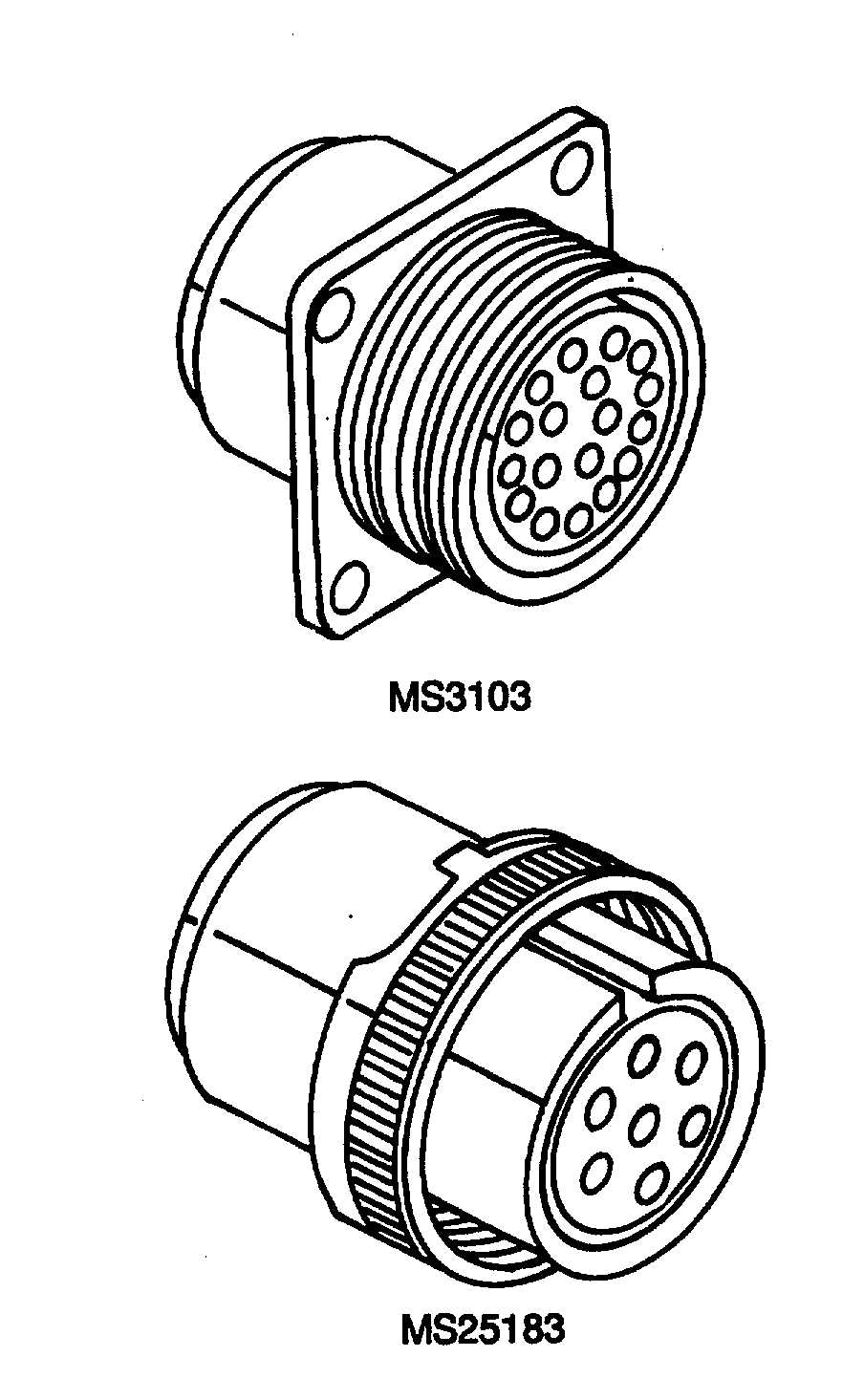TM 1-41500-204-23-4
Figure 3-7. Potting Connectors
(4) Check fuses in associated circuitry for
correct current rating.
(5) Ensure installation of MS3057 cable
damp adapters on all MS connectors except those that
are moisture-proof.
(6) Ensure that vinyl tape is wrapped around
wires in MS3057 cable damp adapters so that tightening
of the cable damp adapter cap provides sufficient grip
on the wires to keep tension from being applied to the
connector pins.
(7)
Ensure
that
unused
plugs
and
receptacles are covered with moisture-proof paper, tied
with waxed cord, and appropriately tagged to indicate
the circuit or accessory with which associated. The units
will then be secured with damps to the aircraft structure
or to other wiring that is properly anchored.
(8) Ensure that the coupling nut of AN
connectors is lockwired as required by the applicable
aircraft maintenance handbook.
(9) Ensure that moisture-absorbent type
material is not used as fill for MS3057 damps or
adapters.
(10) Ensure that there is no evidence of
deterioration of potting compound in potted connectors.
(11) Replace cracked dielectric inserts.
c. Installation of Connectors on Wires. The
following paragraphs describe how solders and other
fastening means are matched to the wire type and to the
installation as follows.
(1) Soldering. Soldering is used for tin-
coated copper wire, coaxial, cable, and silver-coated
copper wire.
(a) Tin-lead solder. Soft solder-60/40
tin-lead (Federal Specification QQ-S-571, composition
Sn 60) is used for fin-coated copper wire and for coaxial
cable.
(b) Lead-silver solder. Soft solder-
lead-silver
(Federal
Specification
QQ-S-571,
composition Ag 2.5 or Ag 5.5) is used for silver-coated
copper wire.
NOTE
Solder cup contacts are silver or
gold plated to provide low contact
resistance. Silver plated contacts
have pretinned solder cups. Gold
plated contacts are not pretinned
because
the
gold
prevents
oxidation and is therefore always
easy to solder.
(2) Crimping. Crimp connections are used
for nickel-dad copper wire, and tin, silver, or nickel
coated copper wire.
3-4. Electrical System Components. Various
electrical system components used in Army aircraft are
explained in the applicable maintenance manual.
a. Storage Battery. The battery provides engine
starting power, back-up emergency power, and gun
drive power during firing of the turret weapons. The
battery installation usually includes vent tubes, eyebolts
for attaching tiedown rods, and a battery cable.
(1) Inspection. Inspect for corrosion,
overheating, and overcharging. Every 120 days or
every 100 flight hours, remove the battery and return to
direct
3-13

